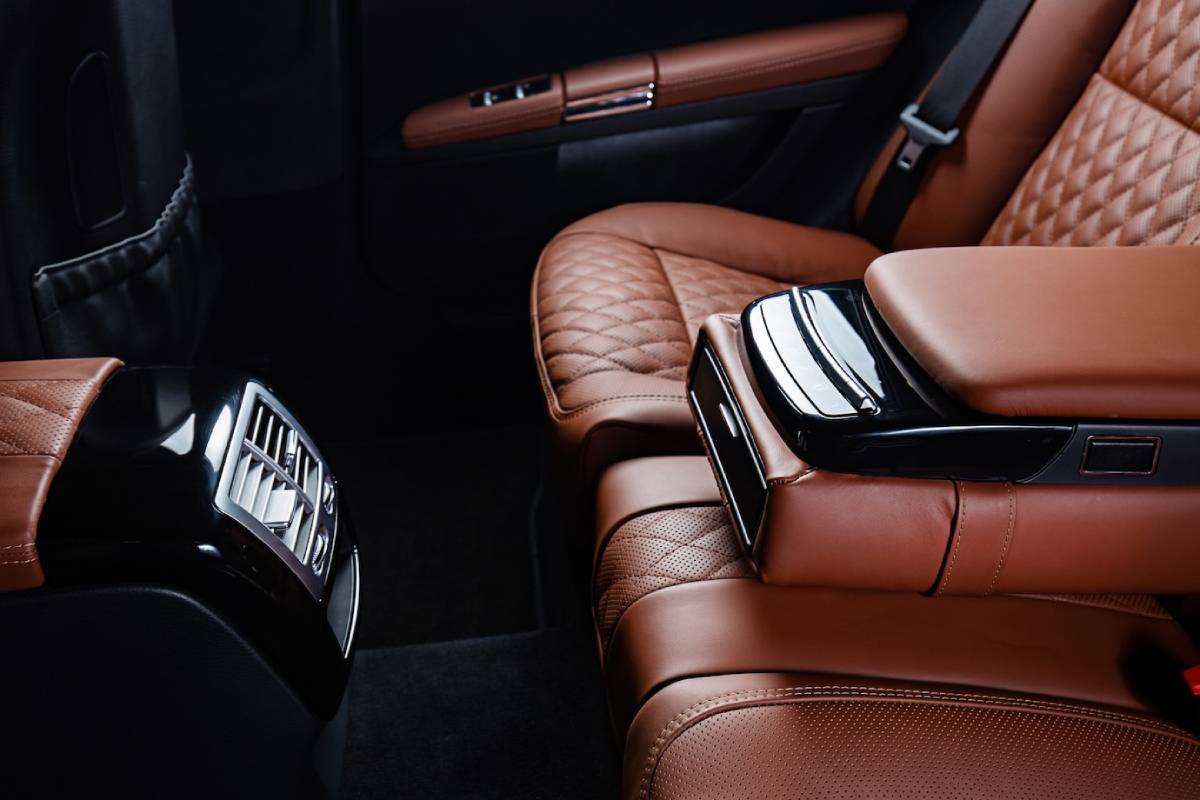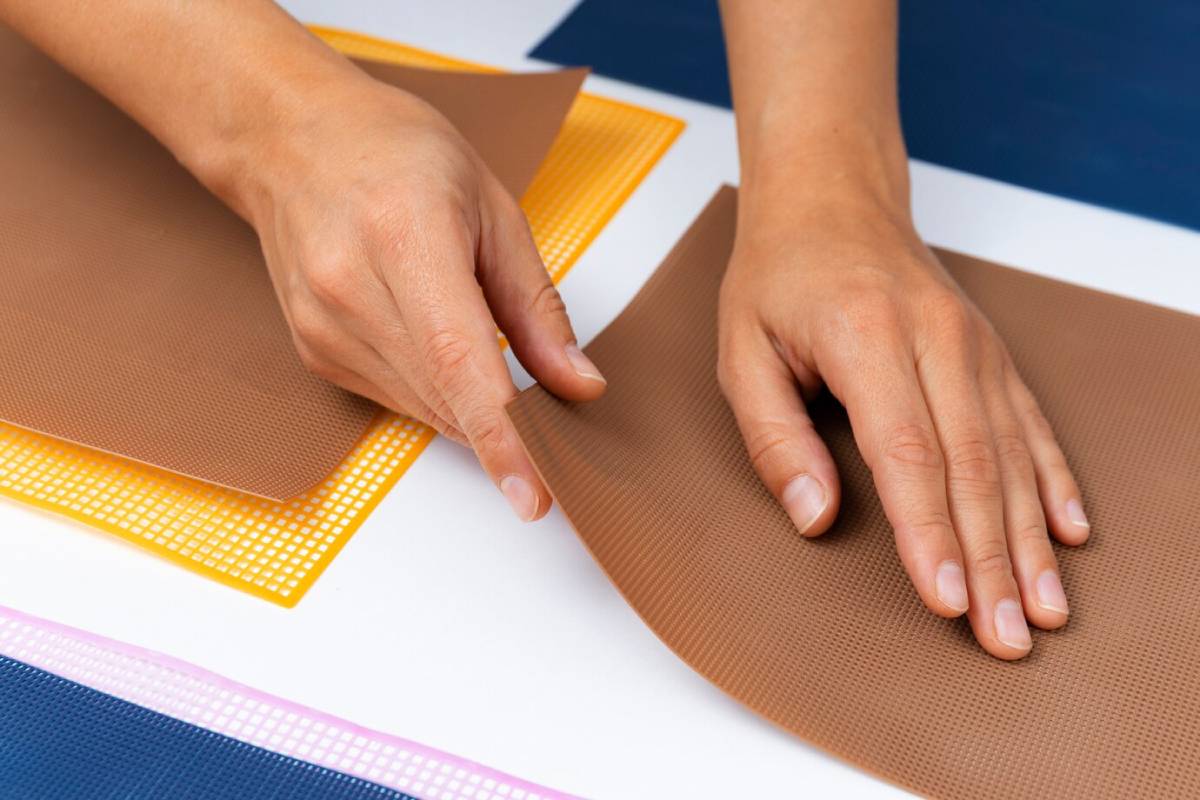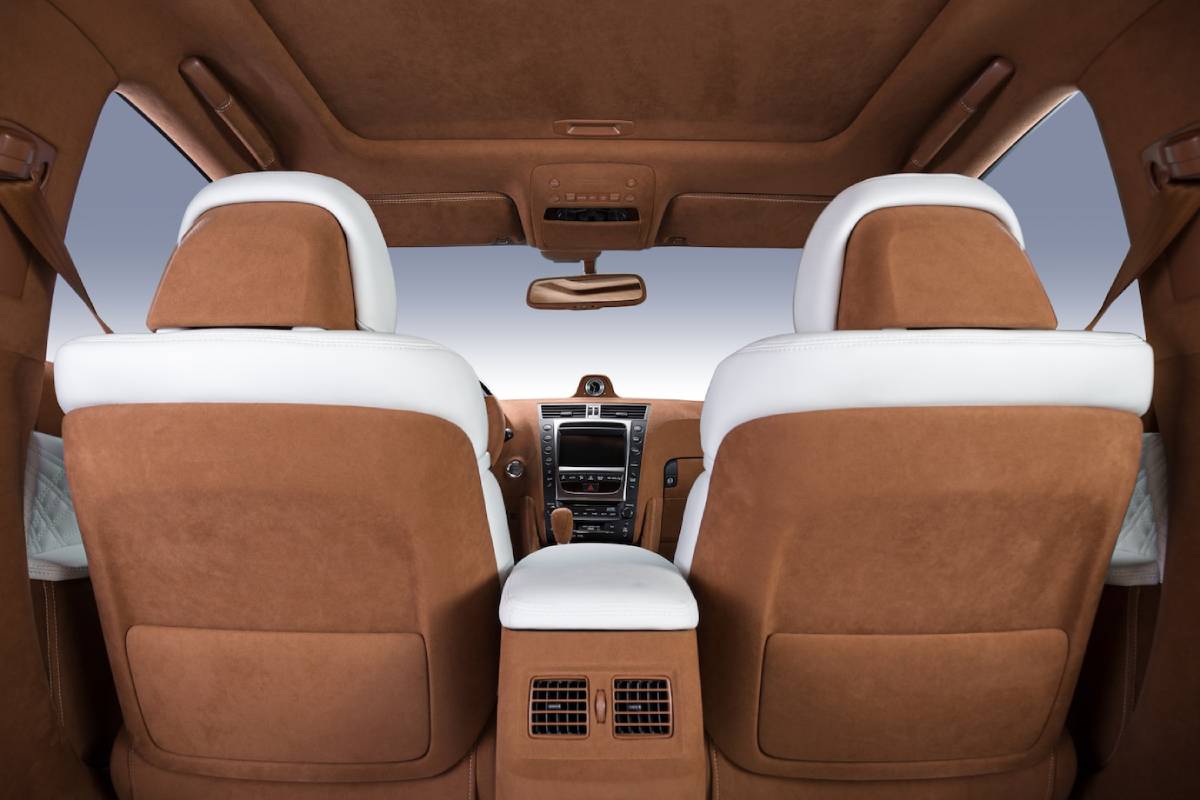
Innovations in Vegan Leather for Car Interiors
Recently, the automotive industry has changed a lot. This change comes from more people knowing about environmental problems and consumers wanting eco-friendly options. Vegan leather for car interiors is a big area of innovation. This blog explores sustainable car materials, highlighting the growth of vegan interiors. These innovations are changing eco-friendly automotive design.
The automotive sector has long used traditional leather. This material feels luxurious, but it raises concerns about animal welfare and the environment. As technology grows, new materials are being developed. These materials look and feel like leather, and they provide a more sustainable option. These new vegan leather innovations aren’t only about looks. They show a bigger change towards responsible manufacturing and design in the industry.
Key Benefits
Environmental Impact

Vegan leather innovations for car interiors are key. They help reduce the environmental impact of car production. Traditional leather production is resource-intensive, requiring significant water, energy, and chemicals. The livestock industry also adds significantly to greenhouse gas emissions. It contributes to deforestation and causes biodiversity loss, too. Car makers can reduce their carbon footprint by using vegan leather. This choice helps build a sustainable future.
Vegan car interiors use materials like polyurethane, recycled plastics, and plant-based options, such as pineapple leaves and mushrooms. These materials reduce the use of animal products. They also use waste and renewable resources, which helps reduce environmental impact. For example, Piñatex is a leather alternative made from pineapple leaf fibres. It is biodegradable and uses fewer resources than regular leather.
Consumer Demand and Market Trends
The shift towards vegan car interiors is also driven by changing consumer preferences. Today’s shoppers know more about the ethics and environment linked to what they buy. More people want products that align with their values, such as eco-friendly car materials.
Car makers are meeting this demand by adding vegan leather to their designs. This gives consumers an ethical option while still ensuring quality and style. Major automotive brands are also joining the trend. They are now using vegan interiors. This shows they want to stay competitive in the market. Tesla is a leader in electric vehicles. The Model 3 and Model Y have vegan leather interiors. Eco-friendly buyers really like this choice.
Advancements in Material Technology

Vegan leather for car interiors shows how far material technology has come. These innovations aim to mimic the look and feel of traditional leather. They also boost its performance. Vegan leather is often durable and resists wear and tear. It’s also easy to clean. This makes it a smart choice for car interiors.
Vegan leather can be customised in texture, colour, and finish. This gives designers more flexibility and creativity. This flexibility lets designers create unique, personalised interiors. These spaces reflect the brand’s identity and meet what consumers expect.
Additional Expert Tips & Common Mistakes to Avoid
Best Practices for Choosing Vegan Leather
When choosing vegan leather for car interiors, think about where it comes from and how it’s made. Choose materials that are eco-friendly and free of harmful chemicals. Check for certifications like OEKO-TEX or Global Organic Textile Standard (GOTS). These ensure materials meet strict environmental and social standards.
Another best practice is prioritising materials made from renewable resources or recycled content. This helps sustainability. It also cuts the need for new materials, which lowers the environmental impact.
Common Mistakes and Misconceptions
Many people mistakenly believe that vegan leather is less durable than genuine leather. Modern vegan leather has come a long way. Early versions had durability problems. But now, they are much stronger and last longer. Choose high-quality materials. Also, ensure proper maintenance to maximise their lifespan.
Another mistake to avoid is assuming that all vegan leather is created equal. “Vegan leather” includes many materials. Some of these may not be very eco-friendly. Research the materials and their environmental effects. This helps you make a smart choice.
Advanced Insights
The Future of Vegan Leather in Automotive Design
The automotive industry is evolving. Vegan leather will play a larger role in car interiors. New advances in material science are leading to better, more sustainable options. Researchers are looking into lab-grown leather. This option offers the benefits of traditional leather but avoids environmental and ethical problems.
Also, adding smart technologies to vegan leather is an exciting development. Picture car seats that are both luxurious and functional. They have heating and cooling features. Plus, they include biometric sensors for extra comfort and safety. These advancements could change how we enjoy car interiors. They may also boost the use of vegan materials.
Industry Perspectives
Experts say the demand for vegan car interiors will keep growing. This is due to consumers caring more about the environment and rising regulations. Car brands that focus on sustainability and innovation can stand out. This approach helps them attract loyal customers.
Collaboration is key. Automakers, material scientists, and designers must work together. This teamwork will help create new materials and technologies. When these groups team up, they can create solutions that help both consumers and the planet.
Conclusion: Innovations in Vegan Leather for Car Interiors

In conclusion, vegan leather for car interiors is a big step in sustainable car design. Car makers can cut their environmental impact by using eco-friendly materials. This helps them meet consumer demand and stay competitive. As technology advances, vegan car interiors have endless possibilities. This opens up exciting opportunities for future automotive design.
Choosing a vehicle with vegan interiors is an eco-friendly endorsement for the planet. When it’s time for your next car, pick one that reflects your values. Drive toward a sustainable future that benefits us all. We can guide the automotive industry to greener, more ethical paths by making smart choices together.
What are your thoughts on vegan leather for car interiors? Do you believe it will become the standard in automotive design? Share your opinions and join the conversation on sustainable auto materials.